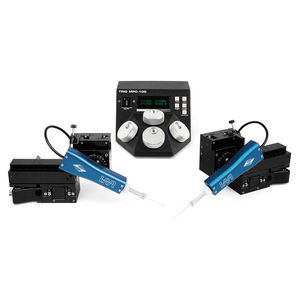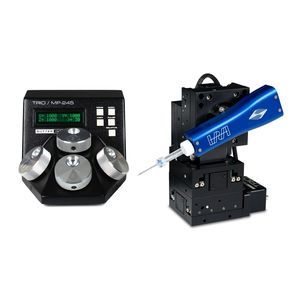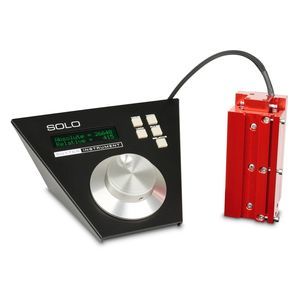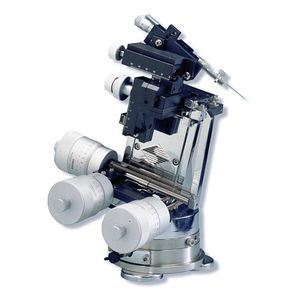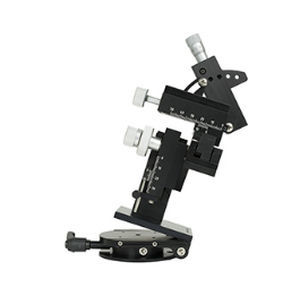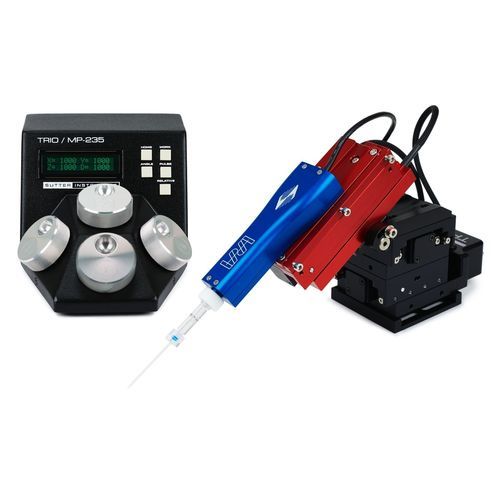
- Laboratory
- Laboratory medicine
- Three-axis micromanipulator
- Sutter Instrument
Three-axis micromanipulator TRIO™-235
Add to favorites
Compare this product
Characteristics
- Options
- three-axis
Description
Ideal for in-vivo work, the TRIO™-235, replaces the Z-axis and replaces it with an adjustable diagonal axis. This configuration pairs a traditional X and Y-axis with a diagonal axis that can be adjusted in angle with a set screw. The diagonal features 50 mm of travel, with 25 mm of travel in the X and Y-axes. On this model, we have added software to create a synthetic "Z-axis" by combining the Diagonal and X-axes in reverse of how we create a synthetic diagonal axis on our other manipulators. The TRIO-235 features a precision bearing and lead-screw design.
The TRIO-235 controller employs a combination of state-of-the-art software and mechanical design that eliminates the need for the motor to remain powered on during recording, thus eliminating the heating effects of the motors and giving us the electrically quietest manipulators in the industry. This stability ensures that Sutter manipulators will not drift in the middle of experiments.
The compact design of the integrated Rotary Optical Encoder (ROE) controller uses minimal bench space; provides quiet, fan-free operation; and is easy to use. No rack mounted controller is required. Position coordinates, in relative or absolute values, are displayed directly on the ROE. The TRIO manipulators use a logarithmic acceleration algorithm that eliminates the need for speed selection. As the knobs on the ROE are turned faster, acceleration ramps up. This allows for smooth and intuitive motion control of electrode position without the need to stop and change speeds or lift your hand from the knobs.
Catalogs
No catalogs are available for this product.
See all of Sutter Instrument‘s catalogsRelated Searches
- Analysis medical software
- Microscopy
- Compound microscope
- Laboratory microscope
- Tabletop microscope
- Microscope with LED light
- Laboratory software
- Digital microscope
- LED illuminator
- Scan software
- Fluorescence microscope
- Research microscope
- Compact illuminator
- Compact microscope
- Microscope illuminator
- Image analysis software
- IR microscope
- Micromanipulator
- Cold light source
- Laser microscope
*Prices are pre-tax. They exclude delivery charges and customs duties and do not include additional charges for installation or activation options. Prices are indicative only and may vary by country, with changes to the cost of raw materials and exchange rates.




